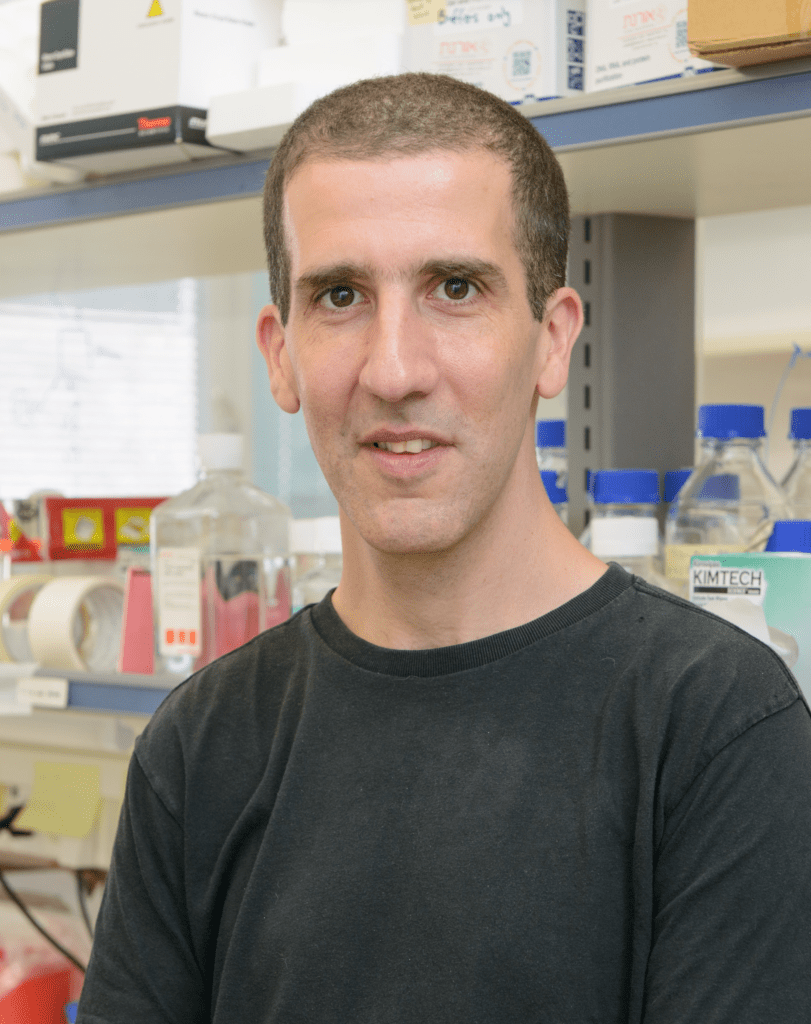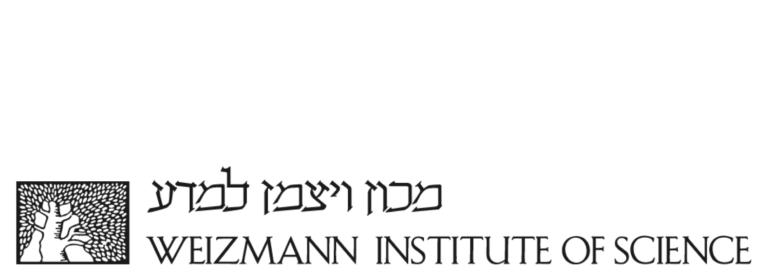
Prof. Sarel Fleishman
“I am excited to participate in the CONSENSE consortium! Protein-based biosensors could open vast opportunities for developing diagnostics, environmental monitoring devices and tools that can quickly assess the effectiveness of designed enzymes.”
Sarel leads an interdisciplinary group developing methods for designing proteins with desired properties through a unique combination of structural bioinformatics and atomistic design calculations. Methods developed by the lab, such as its protein stability-design algorithm PROSS and its catalytic-activity optimisation algorithm FuncLib, have enabled the design of therapeutic enzymes, binders, and vaccine immunogens through a fraction of the effort and time required by alternative methods. The lab also develops experimental high-throughput methods for high-throughput synthesis and screening of repertoires of antibodies and enzymes.
Sarel graduated from the Adi Lautman Interdisciplinary Program for Outstanding Students at Tel Aviv University, where he majored in chemistry and molecular biology. In his Ph.D. work as a Sir Charles Clore Fellow with Prof. Nir Ben-Tal, he developed methods for accurate structure prediction in membrane proteins, for which he received the Science Magazine Award for a Young Molecular Biologist. Sarel continued for a postdoc as a Human Frontier Science Program Fellow at HHMI in Prof. David Baker’s lab where he developed new methods for de novo binder design, culminating in the first de novo designed protein inhibitor (targeting Spanish flu hemagglutinin). Among his awards are two European Research Council grants, Human Frontiers, Marie Curie and Alon career-development awards, the Henri Gutwirth Prize (2018), the Israeli Society for Biochemistry award (2020) and the Weizmann Scientific Council Award (2018).
Fleishman, S. J.; Whitehead, T. A.; Ekiert, D. C.; Dreyfus, C.; Corn, J. E.; Strauch, E.-M.; Wilson, I. A.; Baker, D. Computational Design of Proteins Targeting the Conserved Stem Region of Influenza Hemagglutinin. Science 2011, 332 (6031), 816–821.
Fleishman, S. J.; Baker, D. Role of the Biomolecular Energy Gap in Protein Design, Structure, and Evolution. Cell 2012, 149 (2), 262–273.
Baran, D.; Pszolla, M. G.; Lapidoth, G. D.; Norn, C.; Dym, O.; Unger, T.; Albeck, S.; Tyka, M. D.; Fleishman, S. J. Principles for Computational Design of Binding Antibodies. Proc. Natl. Acad. Sci. U. S. A. 2017, 114 (41), 10900–10905.
Goldenzweig, A.; Goldsmith, M.; Hill, S. E.; Gertman, O.; Laurino, P.; Ashani, Y.; Dym, O.; Unger, T.; Albeck, S.; Prilusky, J.; Lieberman, R. L.; Aharoni, A.; Silman, I.; Sussman, J. L.; Tawfik, D. S.; Fleishman, S. J. Automated Structure- and Sequence-Based Design of Proteins for High Bacterial Expression and Stability. Mol. Cell 2016, 63 (2), 337–346.
Lapidoth, G.; Khersonsky, O.; Lipsh, R.; Dym, O.; Albeck, S.; Rogotner, S.; Fleishman, S. J. Highly Active Enzymes by Automated Combinatorial Backbone Assembly and Sequence Design. Nat. Commun. 2018, 9 (1), 2780.
Khersonsky, O.; Lipsh, R.; Avizemer, Z.; Ashani, Y.; Goldsmith, M.; Leader, H.; Dym, O.; Rogotner, S.; Trudeau, D. L.; Prilusky, J.; Amengual-Rigo, P.; Guallar, V.; Tawfik, D. S.; Fleishman, S. J. Automated Design of Efficient and Functionally Diverse Enzyme Repertoires. Mol. Cell 2018, 72 (1), 178–186.e5.
Netzer, R.; Listov, D.; Lipsh, R.; Dym, O.; Albeck, S.; Knop, O.; Kleanthous, C.; Fleishman, S. J. Ultrahigh Specificity in a Network of Computationally Designed Protein-Interaction Pairs. Nat. Commun. 2018, 9 (1), 5286.

